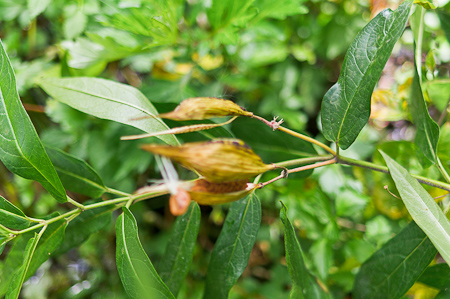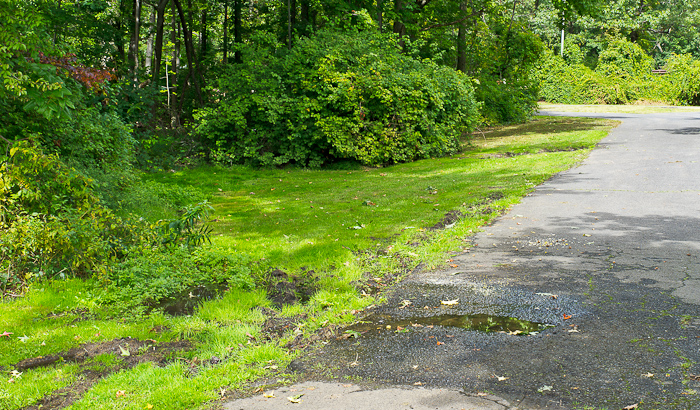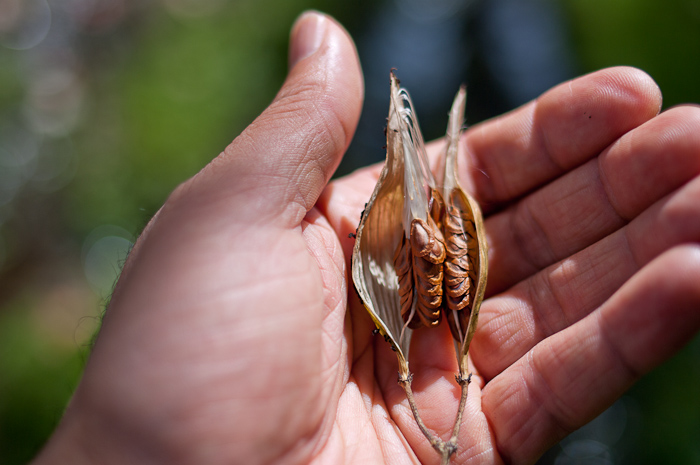Swamp Milkweed (Asclepias incarnata)
Var. Victorious and Justified.
Obtaining viable seeds from your own plants may be one of the sweetest victories for native plant enthusiasts. A few weeks ago, I wrote about foraging (stealing) native plant seeds from the wild and just kind of dipped my toe into the ethics of that. Recently however, I harvested seeds from native plants that I purchased from the garden store. This summer I cultivated these plants in a stolen garden and have been chronicling it as nerdy native plant summer adventure. Not mentioned in those articles though, I came across more than a few plants that I wanted but knew would not grow well in the sunny dry meadow climate of my stolen garden.

Swamp milkweed (Asclepias incarnata) was one of these plants. For some reason I couldn’t resist it. I think it has to do with common milkweed’s weird leaf pattern and strange looking seed pods. I hadn’t heard of swamp milkweed until I saw it at the garden store. Also, just past my stolen garden, on the side of the road there is (what appears to be) either an underground spring or some type of water runoff from the culverted stream that runs underneath the park. In either case, water is bubbling up through the blacktop and running off into the grass and woods. This little water variation has created a swamp micro-climate allowing for a host of different plants to grow there. Arrowwood viburnum (Viburnum dentatum) sweet gum (Liquidambar styraciflua) white heath aster (Symphiotrichum Ericoides) and a few pin oaks (Quercus palustris) are the native stalwarts. And in the other corner, Japanese stiltgrass (Microstegium vimineum), bittersweet nightshade (Solanum dulcamara) and porcelain berry (Ampelopsis brevipedunculata), are generally kicking everybody’s ass.

I planted two swamp milkweed plants on the edge of this mucky water run-off tributary. Finding a spot for these guys wasn’t easy. If I placed these plants in the grass they would have been decapitated most certainly by the groundscrew that comes to cut the grass once a week. If planted too deep in the thicket, these plants would not get enough sun or they’d be choked out by the vigorous stuff already growing there. I’ve heard that swamp milkweed will tolerate dryer soil but its called swamp milkweed, why not put those babies through their paces in the muck they supposedly thrive in?
Fast-forward to the end of the summer and it was a genuine success. Full disclosure: I got nowhere near as many flowers as displayed on the plant-tag. I also had a not so small yellow aphid problem. The yellow aphids were handily dispatched with neem oil. So go figure, —that hippy jooce worked! It probably killed all the butterfly larva too. Sigh. As for the tiny patch of flowers I did get…
they turned into two spindle-shaped seed pods —robust, full of seeds and the coolest gossamer plant silk that you’ve ever touched…
Or seen fly away. One day I was spraying aphids. A day or two latter I was nodding approval at their dead black bodies all over my green seed pods. A spray and a day later (for the aphids at the base of the plant) all the aphids were gone, my plants were leaning over and those seed pods were yellowing and split open. Those seeds were mine! No guilt, no ethics, no bullshit. I paid for those plants so these rich results were going in my pocket. I touched the first pod and the seeds just took off in the wind. I barely got my fingers on that delicate silk. I grabbed a few and tried to sow them right near the two original plants. Regarding the others seeds, fine, let those escaped seeds be the angel’s share, Gaia’s dues… Hell, pouring one out for my dead homies, but that next pod was all mine.

I grabbed the second pod with a lot more care. For some reason I was elated. I felt victorious. Come to think of it, I was! To have your native plants grow, flower and seed in a public place, thats kind of what its all about. We’ve been advised to plant natives in our gardens for many reasons one of them being the hope that those native plants will spread and repopulate some of our wild spaces. Since I don’t have my own garden space, I’ve skipped the ‘our garden’ part and gone straight to the wild. Where I live I’ve seen porcelain berry and Asian bittersweet ‘kudzu-ize’ broad chunks of state park land. So I’ve got no problem watching swamp milkweed, blazing star, solidago rugosa and woolgrass begin to crowd out some of the usual suspects.
In my life, too much vegetation comes from a store after the exchange of currency. There is something very primal about gathering seeds from your own plants. It feels very rewarding to plant them in the fall or put them in cold storage for the spring and trawling the Internets/garden forums to find the best way to stratify them. Next year they can be surgically planted in gardens or somewhere else in the wild. There’s also that very hippy feeling of sticking it to the man. You silently smile to yourself, knowing that each teaspoon of home-grown seed would be sold in the garden store for $3 a seed packet. Packets!? We don’t need no stinking seed packets!October 7, 2013Posted in OUTSIDE, PROJECTS, THINGSTags: Asclepias incarnata, seeds, swamp milkweed Leave a comment

